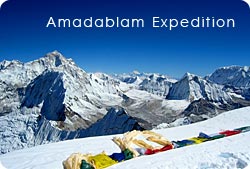Nepal- Climate & Weather
- Nepal has four distinct seasons. Spring, from March to May, is warm and dusty with rain showers at the end of May. Summer, from June to August, is the monsoon season when the hills turn lush and green. Autumn, from September to November, is cool with clear skies, and is the most popular trekking season. In winter, from December to February, it is cold at night and can be foggy in the early morning, but afternoons are usually clear and pleasant, though there is occasional snow in the mountains. Nepal is quite far south (at the same latitude as Miami and Cairo) the weather is warmer and winter is much milder at lower elevations, including Kathmandu at 1400 meters. It rarely snows below 2000 meters.
- The monsoon in the Bay of Bengal governs the weather pattern. The monsoon creates a rainy season from the middle of June to the middle of September. It is hot during the monsoon and it rains, but it is a considerate rain, limiting itself mostly to the night. It usually does not rain for more than one or two days during the entire autumn season from mid-October to mid-December. During winter and spring there may be a week or so of rainy evenings and occasional thunderstorms blanket the hills with snow. The Himalaya makes its own localized weather, which varies significantly over a distance of a few km.
- In Kathmandu, spring and autumn days are comfortable and the evenings are cool, usually requiring a light jacket or pullover. Winter in Kathmandu brings cold foggy mornings and clear evenings, but pleasant day temperatures with brilliant sunshine most days after the morning fog has lifted. It never snows in Kathmandu, though there is frost on cold nights in January and February. The hottest month is May, just before the rains start.
| Temperatures in Kathmandu are as follows | ||||||||||||||||||||||||
|
||||||||||||||||||||||||
| Please write to us to know more about the temperatures of trekking region that you are interested for. | ||||||||||||||||||||||||





